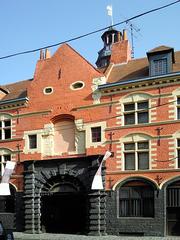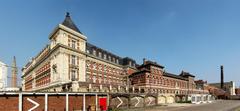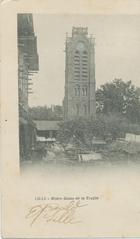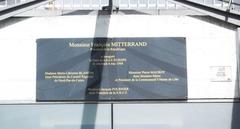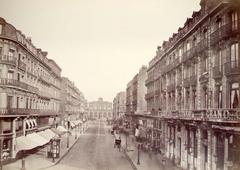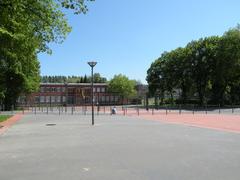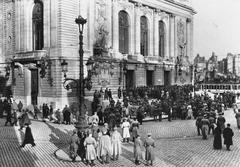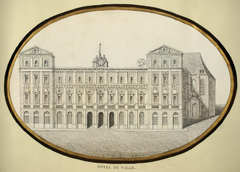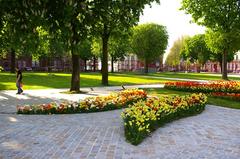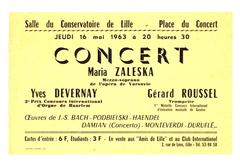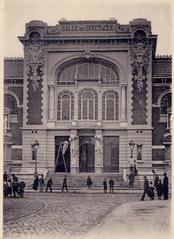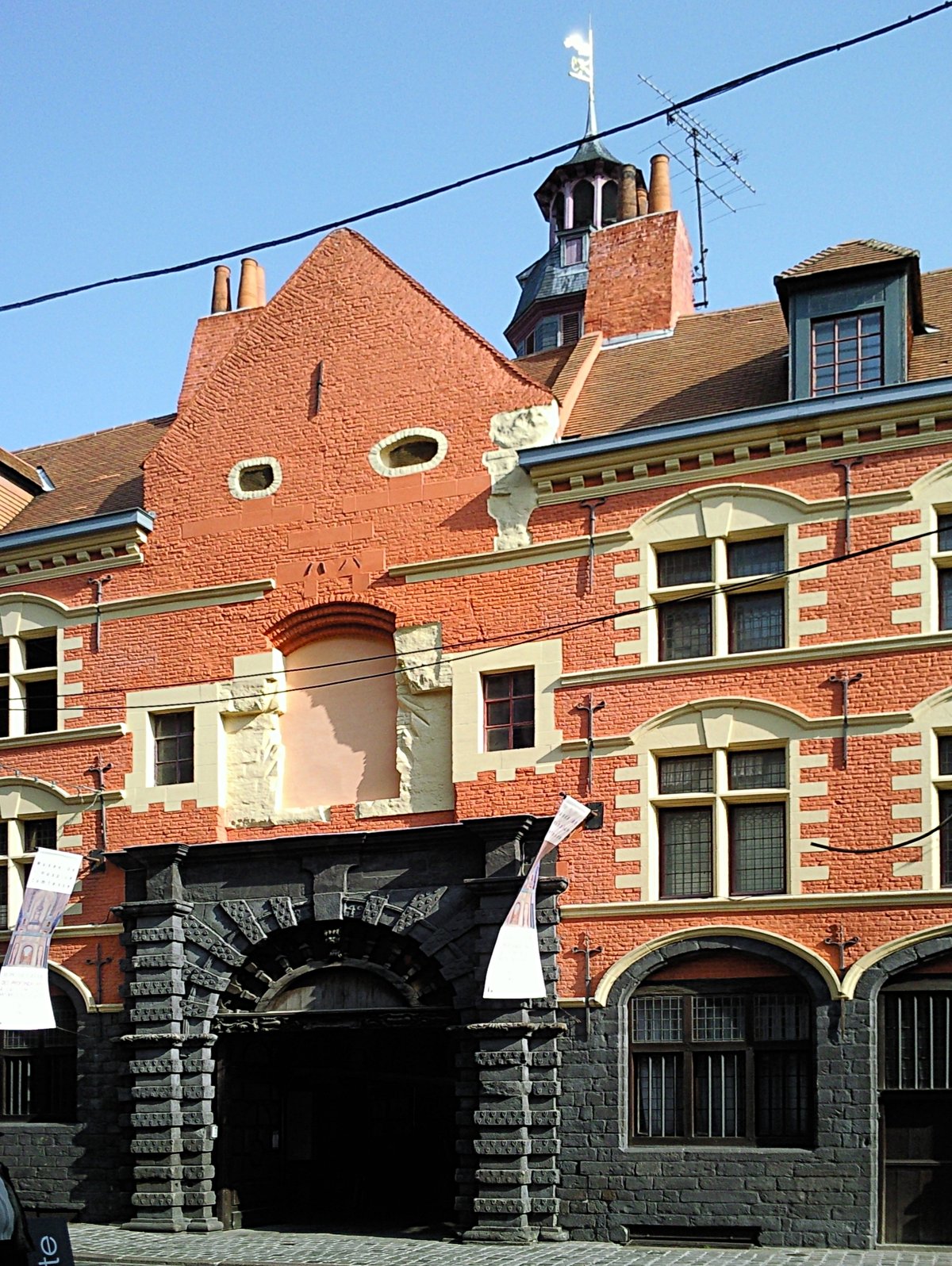
Visiting Hours and Tickets for Musée de l’Hospice Comtesse in Lille
Date: 19/07/2024
Introduction
Located in the heart of Lille’s historic district, the Musée de l’Hospice Comtesse is a testament to the city’s rich past and cultural heritage. Founded in 1237 by Jeanne, Countess of Flanders, the hospice originally served as a charitable institution providing care and shelter to the needy. Over the centuries, it has evolved architecturally and functionally, reflecting the changing needs and priorities of the society it served. Today, it stands as a museum, preserving and showcasing Lille’s history through an impressive collection of artifacts, artworks, and historical documents (Lille Tourism).
The museum’s architectural evolution from a modest 13th-century structure to its significant expansions in the 15th and 17th centuries highlights its historical importance. The Gothic chapel built in the 15th century and the additional wing from the 17th century are notable features that draw visitors from around the world. The hospice’s transition during the French Revolution and its eventual secularization in 1796 marked significant shifts in its administration and purpose (Musée de l’Hospice Comtesse).
In the early 20th century, as the need for a large charitable institution waned, the hospice was converted into a museum. This transformation involved extensive renovations to preserve its historical architecture while adapting it for its new role. Officially opened to the public in 1969, the museum now serves as a custodian of Lille’s cultural heritage, offering valuable insights into the city’s social, economic, and artistic development over the centuries (French Culture).
This comprehensive guide aims to provide all the necessary information for a memorable visit to the Musée de l’Hospice Comtesse, including its history, visiting hours, ticket prices, travel tips, and more.
Table of Contents
- Introduction
- History of Musée de l’Hospice Comtesse
- Visitor Information
- Travel Tips
- Nearby Attractions
- Accessibility
- Preservation and Restoration Efforts
- Impact on Local and Cultural Heritage
- Key Historical Artifacts
- FAQ
- Conclusion
History of Musée de l’Hospice Comtesse
Origins and Foundation
The Musée de l’Hospice Comtesse, located in the heart of Lille’s historic district, has a rich history dating back to the 13th century. Founded in 1237 by Jeanne, Countess of Flanders, the hospice was established to provide care and shelter for the needy, a mission it fulfilled for several centuries. The establishment of the hospice was part of a broader trend during the medieval period, where religious and charitable institutions played a crucial role in social welfare (Musée de l’Hospice Comtesse).
Architectural Evolution
The architectural evolution of the hospice is a testament to its long history and the various phases of construction and renovation it underwent. The original building was a modest structure, but over the centuries, it expanded significantly. The most notable architectural additions occurred in the 15th and 17th centuries. In the 15th century, the hospice saw the construction of a chapel, one of its most striking features. The 17th century brought further expansions, including the addition of a new wing and the refurbishment of existing structures to accommodate the growing needs of the institution (Lille Tourism).
Role During the Middle Ages
During the Middle Ages, the hospice played a vital role in the community. It was not only a place of care but also a center of social and religious life. Managed by a community of nuns who followed the Rule of Saint Augustine, the hospice benefited from the support of local nobility and wealthy citizens, ensuring its continued operation (French Culture).
Transformation in the 18th and 19th Centuries
The 18th and 19th centuries were periods of significant transformation for the hospice. The French Revolution brought major changes in the administration of charitable institutions, and in 1796, the hospice was secularized and came under municipal control. Despite these changes, it continued to serve its original purpose, providing care for the sick and needy (Lille City Hall).
Conversion to a Museum
By the early 20th century, the need for a large charitable institution had diminished, and the hospice buildings were no longer used for their original purpose. In 1962, the decision was made to convert the hospice into a museum dedicated to the history and culture of Lille. Extensive renovations were carried out to preserve the historical architecture while adapting the space for its new function. The museum officially opened to the public in 1969 (Musée de l’Hospice Comtesse).
Historical Significance
The historical significance of the Musée de l’Hospice Comtesse lies in its dual role as a former charitable institution and a modern museum. As a hospice, it represents the medieval tradition of charity and care for the poor. As a museum, it serves as a custodian of Lille’s cultural heritage, preserving and presenting the city’s history for future generations. The museum’s collections provide valuable insights into the social, economic, and artistic development of Lille over the centuries (Lille Tourism).
Visitor Information
Visiting Hours
The Musée de l’Hospice Comtesse is open from Tuesday to Sunday, 10:00 AM to 6:00 PM. It is closed on Mondays and certain public holidays. For the most current visiting hours, it is advisable to check their official website.
Ticket Prices
Admission to the museum is €7 for adults and €5 for students, seniors, and groups. Children under 12 can enter for free. Special discounts and free entry days are available periodically. Check the museum’s website for any updates.
Travel Tips
- Getting There: The museum is easily accessible by public transport. The nearest metro station is Rihour, and several bus lines stop nearby.
- Best Time to Visit: To avoid crowds, consider visiting on weekdays or early in the morning.
- Guided Tours: The museum offers guided tours that provide in-depth insights into its history and collections. These tours are available in multiple languages.
Nearby Attractions
While visiting the Musée de l’Hospice Comtesse, consider exploring other nearby historical sites in Lille, such as the Old Stock Exchange, Lille Cathedral, and the Grand Place. These landmarks are within walking distance and offer a deeper understanding of the city’s history and culture.
Accessibility
The museum is committed to making its exhibits accessible to all visitors. Ramps and elevators are available for those with mobility issues, and special tours can be arranged for visitors with disabilities. For more detailed information, it’s best to contact the museum directly.
Preservation and Restoration Efforts
Preservation and restoration efforts have been crucial in maintaining the historical integrity of the Musée de l’Hospice Comtesse. Various restoration projects have been undertaken to address the wear and tear of the centuries-old buildings, focusing on preserving original architectural features such as the Gothic chapel, the 17th-century wing, and intricate woodwork and frescoes. These efforts have been supported by both public and private funding (Lille City Hall).
Impact on Local and Cultural Heritage
The Musée de l’Hospice Comtesse is a significant cultural landmark that attracts thousands of visitors each year, contributing to Lille’s cultural tourism. It serves as an educational resource, offering programs and exhibitions that engage the public with the history and culture of Lille. The museum also plays a role in preserving local traditions and crafts, showcasing the work of local artisans and promoting the region’s cultural heritage (Musée de l’Hospice Comtesse).
Key Historical Artifacts
The museum’s collection includes several key historical artifacts, such as medieval manuscripts, religious artifacts, and artworks originally part of the hospice’s chapel. Notable pieces include a 15th-century altarpiece depicting scenes from the life of Saint Augustine and a collection of medical instruments and documents that provide a glimpse into past medical practices (French Culture).
FAQ
What are the visiting hours for Musée de l’Hospice Comtesse? The museum is open from Tuesday to Sunday, 10:00 AM to 6:00 PM. It is closed on Mondays and certain public holidays.
How much are tickets for Musée de l’Hospice Comtesse? Tickets are €7 for adults and €5 for students, seniors, and groups. Children under 12 can enter for free.
Is the museum accessible to visitors with disabilities? Yes, the museum is equipped with ramps and elevators and offers special tours for visitors with disabilities.
Conclusion
The Musée de l’Hospice Comtesse is more than just a historical monument; it is a living repository of Lille’s rich and diverse cultural heritage. From its origins as a charitable institution founded by a compassionate countess to its current role as a museum, it embodies the enduring values of service, community, and cultural preservation. The museum’s extensive collections, ranging from medieval manuscripts and religious artifacts to Flemish paintings and medical instruments, offer a unique window into the past, providing valuable insights into the social and cultural fabric of Lille over the centuries (Lille City Hall).
Visiting the Musée de l’Hospice Comtesse is not just an exploration of historical artifacts but an immersive journey through time. The museum’s commitment to accessibility, educational programs, and community engagement ensures that it remains a vibrant cultural hub for both locals and tourists. Whether you are a history enthusiast, an art lover, or simply looking for an enriching cultural experience, the Musée de l’Hospice Comtesse has something to offer for everyone. Plan your visit today and delve into the rich tapestry of Lille’s history (Musée de l’Hospice Comtesse).
References
- Musée de l’Hospice Comtesse (https://musee-hospicecomtesse.lille.fr)
- Lille Tourism (https://www.lilletourism.com)
- French Culture (https://www.culture.gouv.fr)
- Lille City Hall (https://www.lille.fr)
